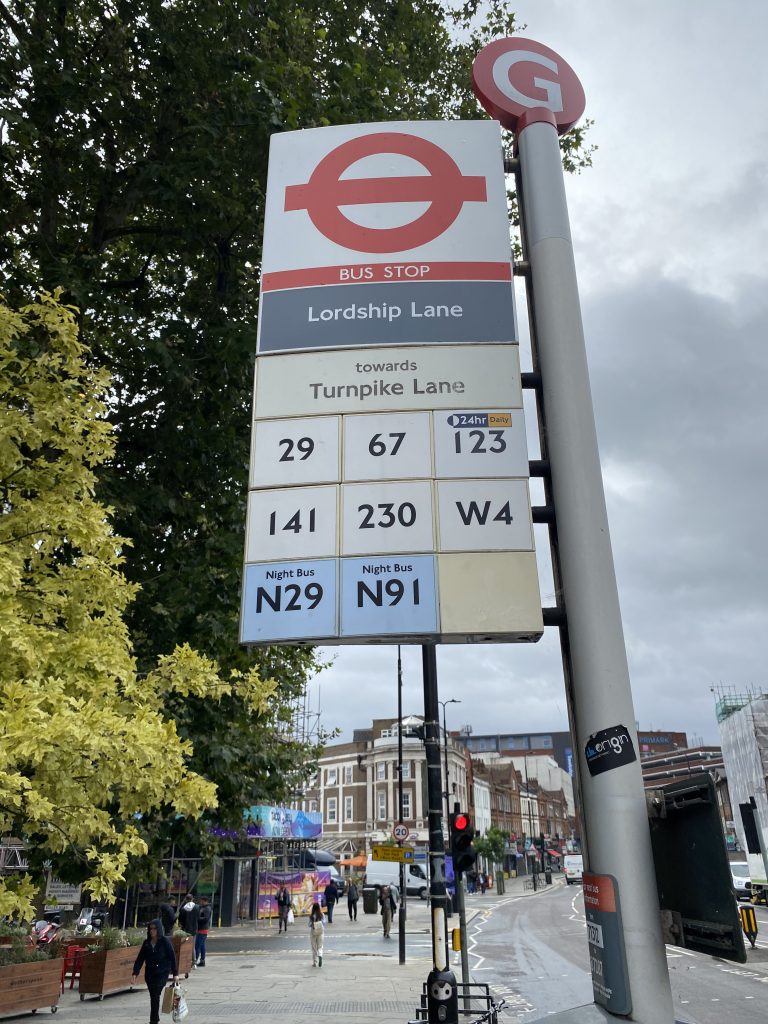Finding a bus stop
Buses stop only in designated places called bus stops. You cannot hail a bus like you can in the countryside (actually, there are a few bus routes outside central London that do allow hailing, but ignore that).
The first problem is to know where you are and where you want to be. This is not always obvious. Note also that it is possible that no one bus may run between these two points, so be prepared for a bus change at some point. London buses do not operate a transfer system – you pay for every journey.
If there is a bus stop near you, it will say where you are. It may be obvious, we mean, Oxford Circus is Oxford Circus, right? Google Maps or similar may help. You can ask people, or look at street signs.
There are plenty of ways to find out where a bus route goes. The TfL site gives all routes with every stop on each direction. For example, a quick web search for “159 bus route” gives this: https://tfl.gov.uk/bus/route/159/ and apps do it too.
When you know what bus you need, and which direction, you can find a stop. Here is an example:

From the top, the first thing we get is that it is bus stop G. The id can be one or two letters and has no significance, just a label to make sure you get the right one.
Below the actual bus stop sign is a grey section saying where you are.
Underneath, a general guide to the direction buses head from this stop. This is something people tend to ignore. How many times do we see people asking the driver ‘do you go to XXX?’ and no, it’s across the road, opposite direction.
Then all the bus routes that stop here. 29, 67, W4 and so on. No other bus will stop here. Night buses eg N29 are backed in blue.
There may also be timetable information, routes and locations of nearby stops, on the pole or in a shelter. This example does not have this.
Bus stops can be closed, for road works or if the bus is diverted, or if buses are not running because of events in London. There may be a temporary stop nearby, or you may have to do some walking or find alternative methods.
